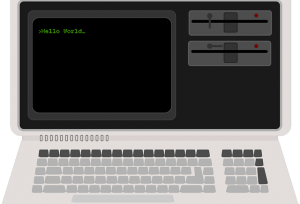
The first operating system
Operating systems, in their current form, have been around since 1961. That’s a long time! But it’s not surprising that they’ve been around this long. Operating systems are the most fundamental part of computing, and they’re also one of the most important technologies we use on a daily basis.
The first operating system for computers was a program called Batch Processing

Batch Processing was the first method of running programs on a computer. It was created in the 1950s and 1960s and allowed users to create programs that could be run automatically. However, these programs had to be written in machine language (a low level programming language) which made them difficult to use.
Batch Processing allowed users to run their own programs automatically but it wasn’t efficient because it would take time to write new batch files every time they wanted their computer to perform a different task or process data in a different way
Batch processing worked by assigning batches of files to a programmer and telling the computer to do a sequence of tasks
The programmer would then submit these instructions (or batch) to be run at some point in the future. The computer would execute the instructions in the same order every time, and wait for each instruction to finish before moving on to the next one.
There were two problems with batch processing
The first operating system was not interactive. It was also slow, because it did not use the same type of memory as your computer does today.
In fact, if you look at a modern computer and compare it to batch processing systems of 50 years ago, you’ll see many similarities: both have an operating system that manages tasks and resources; both can be run on different types of hardware; and both can run multiple applications at once.
In 1961, a man named John McCarthy invented a new language called Lisp, which allowed programmers to specify instructions in terms of functions applied to data

This was an important breakthrough for artificial intelligence research because it allowed people to write programs that could process language and solve problems without needing to explicitly spell out every step of their solution (as was required with other languages).
Lisp was based on two concepts that were not well known at the time: functional programming and recursion. The first of these means that programs could be written as expressions rather than sequences of commands; this enables you to think about your program as a mathematical formula instead of just code. The second means that some functions can call themselves.




